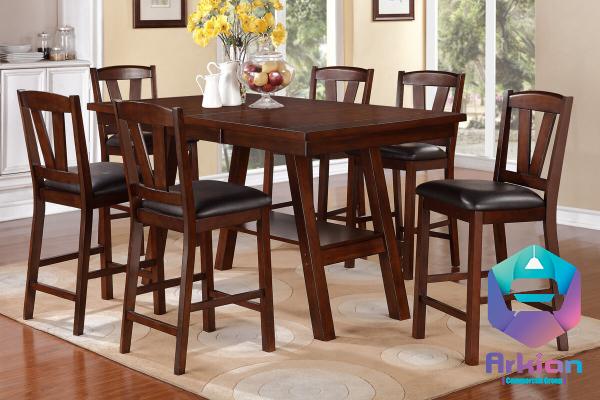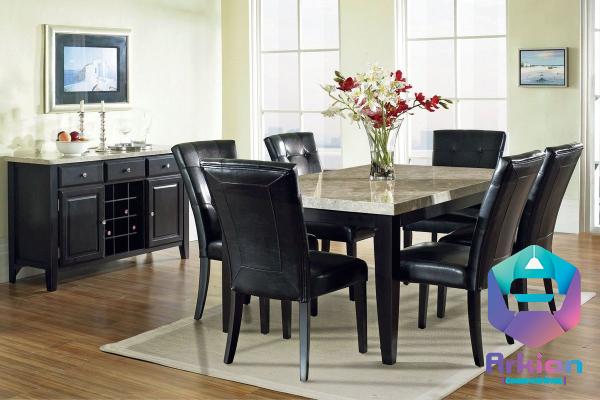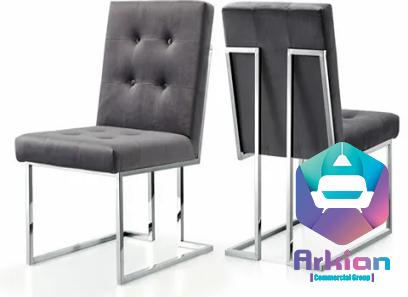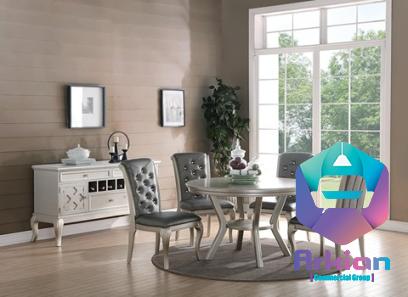When it comes to creating a comfortable and inviting dining experience, the height of the dining table plays a crucial role. Dining table height standards are not just arbitrary measurements; they have been established to ensure optimal comfort, functionality, and aesthetics. In this article, we will explore the significance of adhering to dining table height standards in the hospitality industry. 1. Comfort for guests: One of the primary reasons for dining table height standards is to provide comfort to guests. A table that is too high or too low can lead to discomfort and strain on the body. Standard dining table height, typically around 28 to 30 inches, allows guests to sit comfortably and maintain proper posture while enjoying their meals. This ensures a pleasant dining experience, keeping guests engaged for longer periods.
.
 2. Ergonomics and accessibility: Adhering to dining table height standards also promotes ergonomic design principles and accessibility. It is important to consider the diverse range of guests who may visit a restaurant, including those with disabilities or limited mobility. By following the appropriate height standards, restaurants can provide inclusive seating arrangements, allowing individuals of all abilities to comfortably dine and navigate within the space. 3. Aesthetics and visual appeal: Apart from functionality, dining table height also contributes significantly to the overall aesthetics and visual appeal of a dining space. When tables are correctly proportioned with the surrounding environment, it creates a visually pleasing experience for guests. Tables that are too low or too high may disrupt the harmony of the space, making it appear unbalanced.
2. Ergonomics and accessibility: Adhering to dining table height standards also promotes ergonomic design principles and accessibility. It is important to consider the diverse range of guests who may visit a restaurant, including those with disabilities or limited mobility. By following the appropriate height standards, restaurants can provide inclusive seating arrangements, allowing individuals of all abilities to comfortably dine and navigate within the space. 3. Aesthetics and visual appeal: Apart from functionality, dining table height also contributes significantly to the overall aesthetics and visual appeal of a dining space. When tables are correctly proportioned with the surrounding environment, it creates a visually pleasing experience for guests. Tables that are too low or too high may disrupt the harmony of the space, making it appear unbalanced.
..
 4. Coordination with seating: Proper coordination between the table height and seating is essential for creating a harmonious dining experience. The height of the chairs or stools should complement the dining table, allowing guests to maintain an optimal posture while seated. The coordination between table and seating height contributes to the overall comfort of the guests and enhances the ambiance of the dining area. 5. Efficiency for waitstaff: Adhering to dining table height standards also benefits waitstaff and service efficiency. Tables that are too low can cause strain on the waitstaff when serving and clearing dishes, leading to discomfort and potential injuries. Conversely, tables that are too high may inconvenience guests while reaching for their food or beverages.
4. Coordination with seating: Proper coordination between the table height and seating is essential for creating a harmonious dining experience. The height of the chairs or stools should complement the dining table, allowing guests to maintain an optimal posture while seated. The coordination between table and seating height contributes to the overall comfort of the guests and enhances the ambiance of the dining area. 5. Efficiency for waitstaff: Adhering to dining table height standards also benefits waitstaff and service efficiency. Tables that are too low can cause strain on the waitstaff when serving and clearing dishes, leading to discomfort and potential injuries. Conversely, tables that are too high may inconvenience guests while reaching for their food or beverages.
…
 Following standardized table height ensures a smooth workflow, allowing waitstaff to serve guests effectively. Conclusion: Dining table height standards have been established with careful consideration of guest comfort, accessibility, aesthetics, and operational efficiency. Adhering to these standards in the hospitality industry not only creates a more pleasant dining experience for guests but also promotes inclusive and ergonomic design principles. By ensuring proper coordination between table and seating heights, restaurants can enhance their overall ambiance and leave a lasting impression on visitors. It is imperative for restaurant owners and designers to give due importance to dining table height standards to provide a memorable dining experience to their guests.
Following standardized table height ensures a smooth workflow, allowing waitstaff to serve guests effectively. Conclusion: Dining table height standards have been established with careful consideration of guest comfort, accessibility, aesthetics, and operational efficiency. Adhering to these standards in the hospitality industry not only creates a more pleasant dining experience for guests but also promotes inclusive and ergonomic design principles. By ensuring proper coordination between table and seating heights, restaurants can enhance their overall ambiance and leave a lasting impression on visitors. It is imperative for restaurant owners and designers to give due importance to dining table height standards to provide a memorable dining experience to their guests.










Your comment submitted.